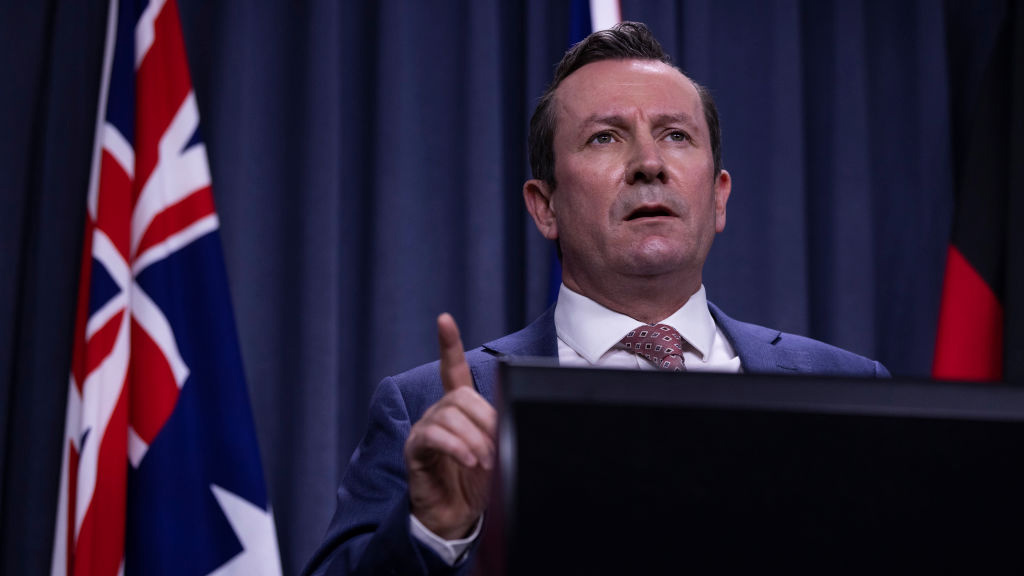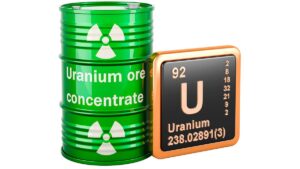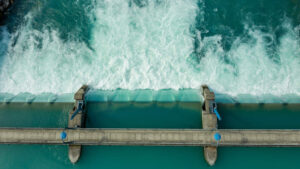Iron ore WA’s cash cow as McGowan dines out on $5.6bn surplus

Pic: Matt Jelonek/Getty Images News via Getty Images.
The WA State Government is dining out on the back of this year’s iron ore bonanza, outstripping even buoyant analyst predictions by posting a record $5.6 billion surplus in 2020-21.
That will hold strong at $2.8 billion in the coming year.
But don’t expect the good times to last forever, treasury bureaucrats have warned, with average prices expected to slide from US$154/t in 2020-21 to US$121/t in 2021-22 and down to “long-run averages” of US$66/t in 2022-23 and beyond.
That would see royalty income for iron ore drop from an astounding $11.3 billion in 2020-21 to $9.2 billion this year – around $4.5b over previous forecasts – and ~$5b over in each of 2022-23, 2023-24 and 2024-25, effectively erasing the State surplus.
Prices climbed to record levels above US$230/t in May as China increased steel production an incredible 12.2% to 563Mt over the first six months of 2021, before beginning a months-long effort to curb hot commodity prices.
The State Government’s predictions are broadly in line with forecasts from analysts that slowing Chinese property activity and environmental restrictions to steel production will reduce demand and prices at the same time as supply increases both in Australia and, especially, from Brazil.
On the other hand, it is not surprising that long term forecasts from Premier Mark McGowan’s treasury, in his first budget as WA Treasurer, skew to the conservative.
Unrealistic predictions around the future iron ore price effectively sunk the free-spending Barnett Liberal Government which WA Labor beat to seize power in a 2017 landslide.
Each US$1 per tonne change in the iron ore price has a massive $82 million impact on State revenue.
Iron ore output to rise
While prices are projected to fall, treasury analysis projects it would take a while for smaller operators running on thinner margins than the Pilbara majors to exit the sector.
Iron ore production in WA is expected to rise from 840Mt last year to peak at 877Mt by 2023-24 before falling in 2024-25 to 870Mt.
Chamber of Commerce and Industry WA chief economist Aaron Morey said the WA Government was bucking the trend of stimulus fuelled debt and deficit building across the world, with net debt falling from a projected $43.7 billion under the previous government to $32.1b in McGowan’s 2021-22 estimates.
But he said broad economic reform was needed to ensure sustainable economic growth, saying the iron ore price and potential GST reforms loomed as major threats to the State’s financial position going forward.
“There are significant risks to the budget position. These include the iron ore price, a renegotiated GST deal and a lack of expenditure restraint, especially in relation to public sector wages,” he said.
“The forecast iron price of US$121.30 for this financial year may prove optimistic, given the current downward pressure on the price. We anticipate this will be offset in the longer term by the adoption of a US$66 price, the long term average, out till 2025.”
McGowan warns against GST fight
Premier Mark McGowan has regularly linked the enduring strength of the WA economy during the COVID-19 pandemic to the hermetic hard border and tough lockdowns his government has used to eliminate community transmission of the virus.
The growth of its Gross State Product was 3.25% in 2020-21 and is forecast to rise by 3.5% again in 21-22 before dropping back to the 1-1.5% range.
McGowan used his budget speech to warn COVID-afflicted States on the eastern seaboard from clawing back at a deal which introduced a 75% floor on GST distributions from the Federal Government after years of political furore over claims resource rich WA was subsidising States in the east.
“This is the result of strong financial management and our strong economy,” McGowan said.
“Revenues are higher across a range of sources as a result of strong economic conditions, including increased royalties from a higher iron ore price.
“However, as we know, the iron ore price is extremely unpredictable. Western Australia is exposed to this volatility unlike any other State.
“Indeed – since its peak in May, the iron ore price fell over $US100 per tonne or almost half. An important lesson to those who call for permanent recurrent spending increases on the back of temporary revenue boosts.
“Other States have used that temporary spike in iron ore prices to try to unravel the GST reforms we fought so hard to achieve. They don’t acknowledge that all States and the Commonwealth have benefitted from high iron ore prices.
“They don’t recognise that the structure of the Western Australian economy is different and that if iron ore royalties were collected through, for instance, payroll tax, Western Australia would retain all of its GST share.”
What about other commodities?
Treasury analysts are closely watching the rising enthusiasm and prices for battery metals, particularly lithium and nickel, which will play a big role in the energy transition.
Lithium prices reached their ebb around this time last year, with royalty revenue from spodumene sales dropping from $59 million in 2019-20 to just $38m in 2020-21.
But with prices on the up and enthusiasm around the sector, that is forecast to more than double to $84 million in 2021-22 before hitting a record $113m by 2024-25.
The Government’s forecast US$600/t average spodumene price this year could be lowballing as well, with prices currently in the US$880-950/t range and Pilbara Minerals recently selling a 10,000t batch on its Battery Material Exchange auction platform for US$1250/t.
Higher nickel prices and mine restarts will see royalties for that commodity rise from $88 million in 2020-21 to $123m in 2021-22, peaking at $133m in 2023-24.
Gold miners are expected to tip around $418m into State coffers in 2021-22, up from $408m last financial year.
Treasury’s take is expected to slide over the three years to fall to $351m in 2024-25.
But that is predicated on a big drop in production as mines age, and gold miners have a habit of increasing reserves through the drill bit.
The natural gas sector is also expected to be a boon for WA going forward, with State expecting an $993 million on previous forecasts in grant contributions from North West Shelf grants as oil and gas prices and production levels increase.
Outside the mining sector
The headlines outside mining for the business community include a $400 million commitment to a new port at Kwinana, and a $750 million climate action fund.
That includes the $256 million for renewable energy initiatives with a previously announced $61.5 million investment in the green hydrogen industry.
It also includes arguably the most controversial measure in the State budget, $350 million to expand the softwood plantation estate in the South West so logging in native forests can be phased out by 2024.
News the native timber industry was facing closure within just three years has drawn applause from anti-logging activists and scorn from the forestry industry and Nationals-led State Opposition.
As expected a big chunk of the surplus will be put to health and social housing packages following negative publicity around the State’s strained public hospital system and homelessness issues.

UNLOCK INSIGHTS
Discover the untold stories of emerging ASX stocks.
Daily news and expert analysis, it's free to subscribe.
By proceeding, you confirm you understand that we handle personal information in accordance with our Privacy Policy.








